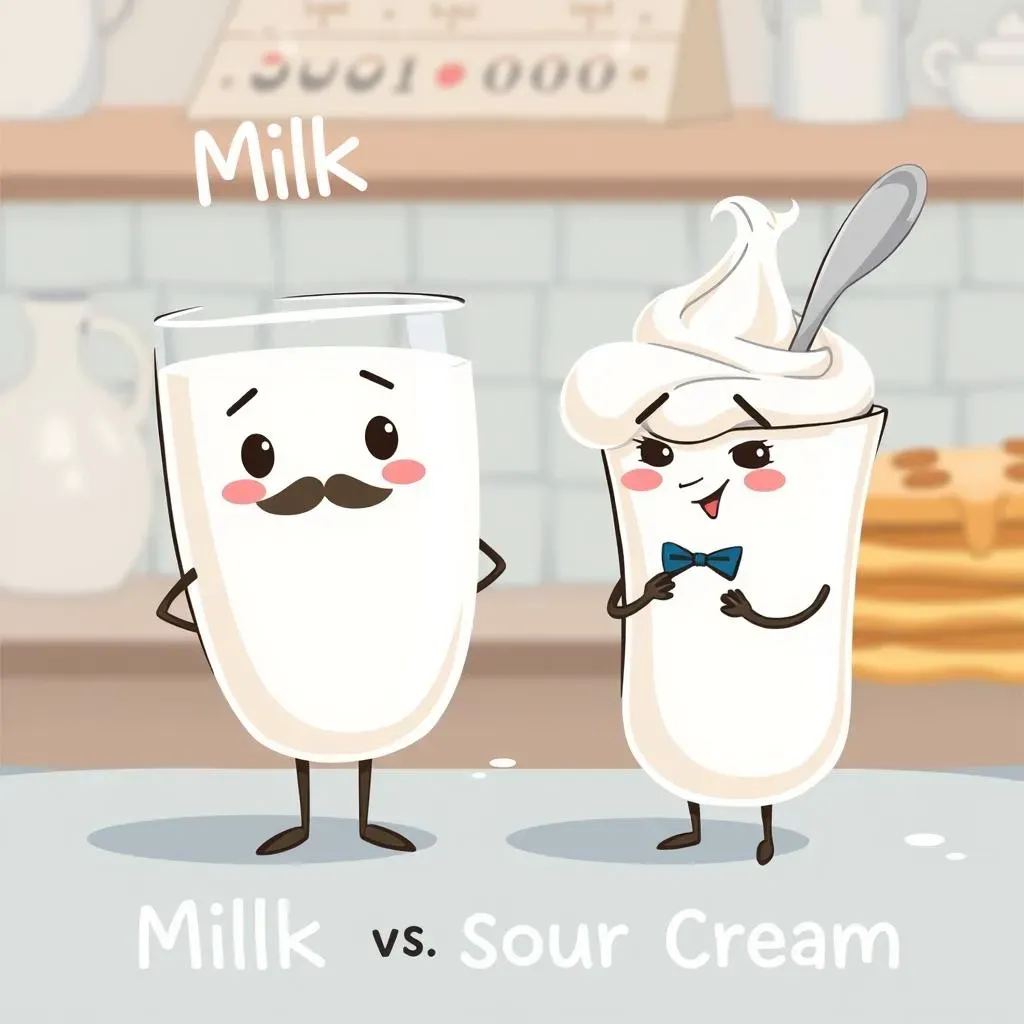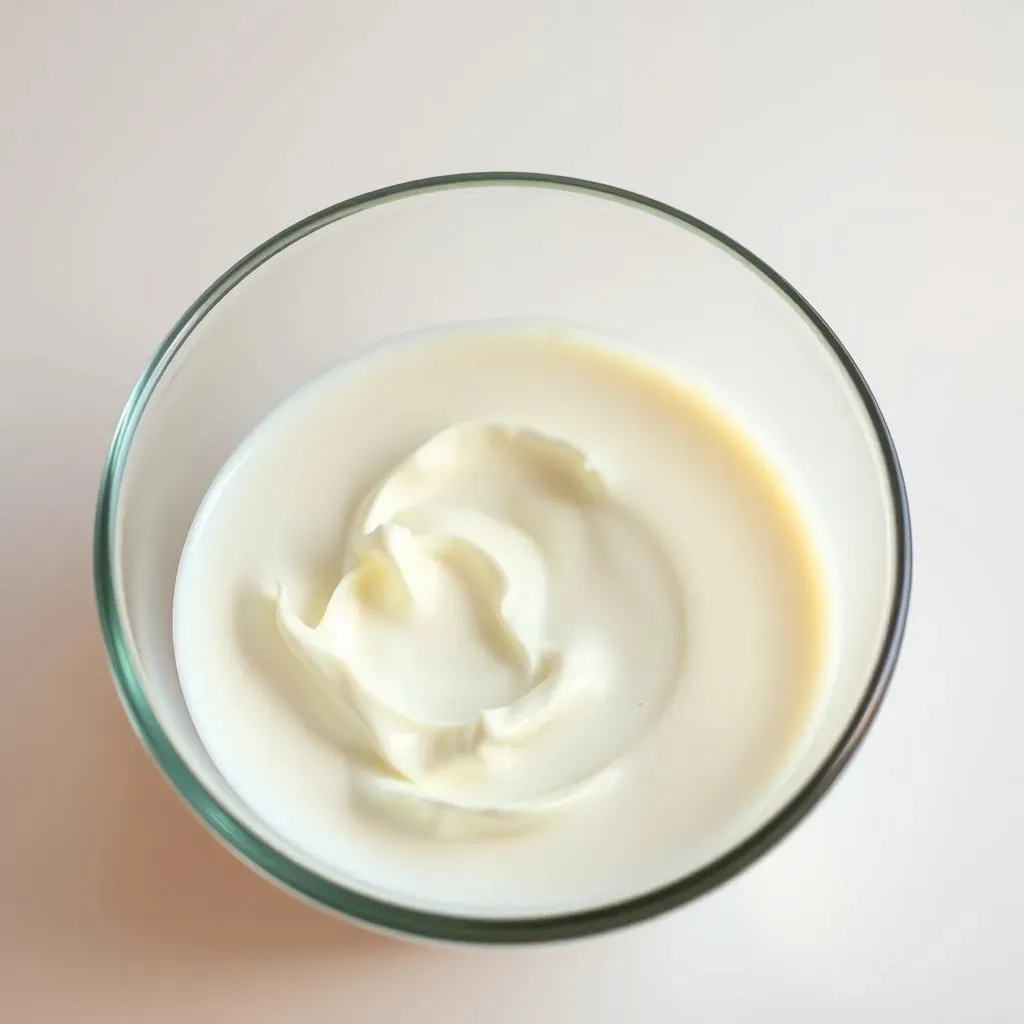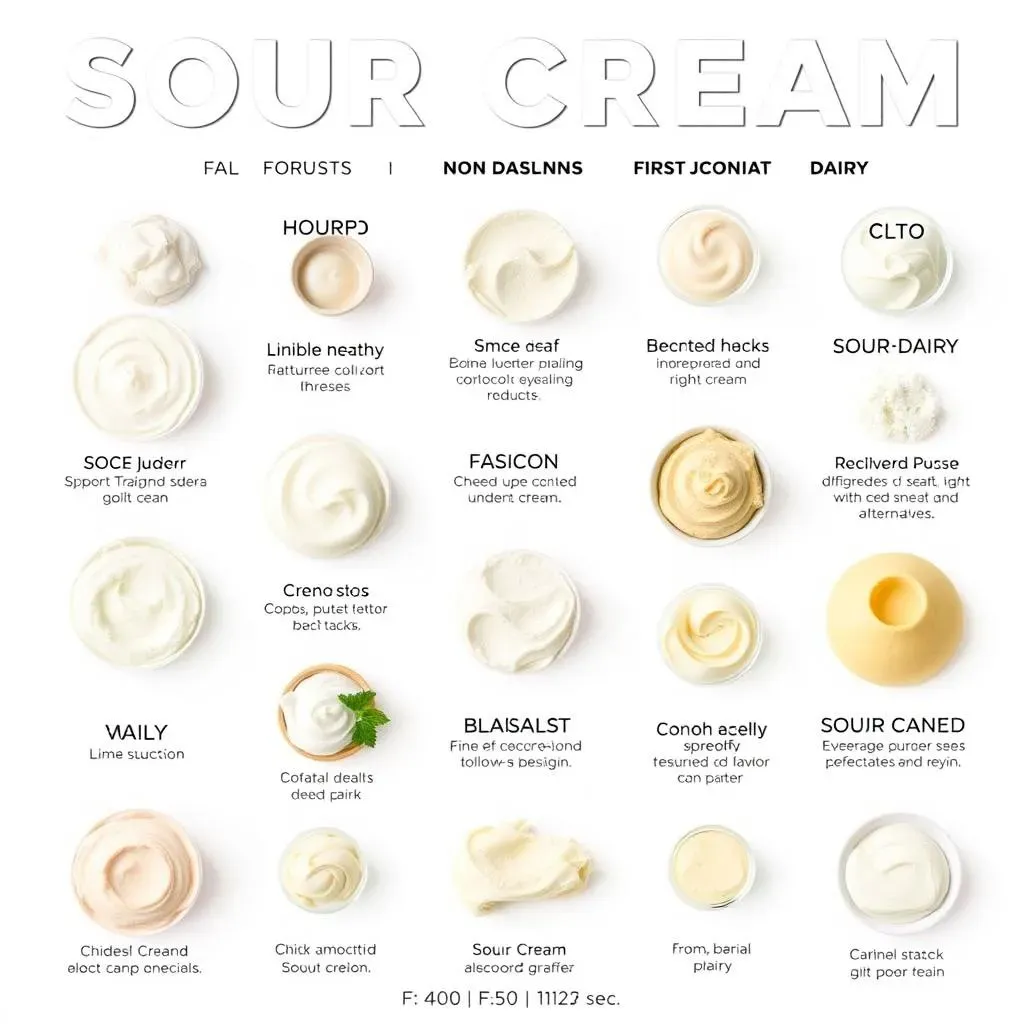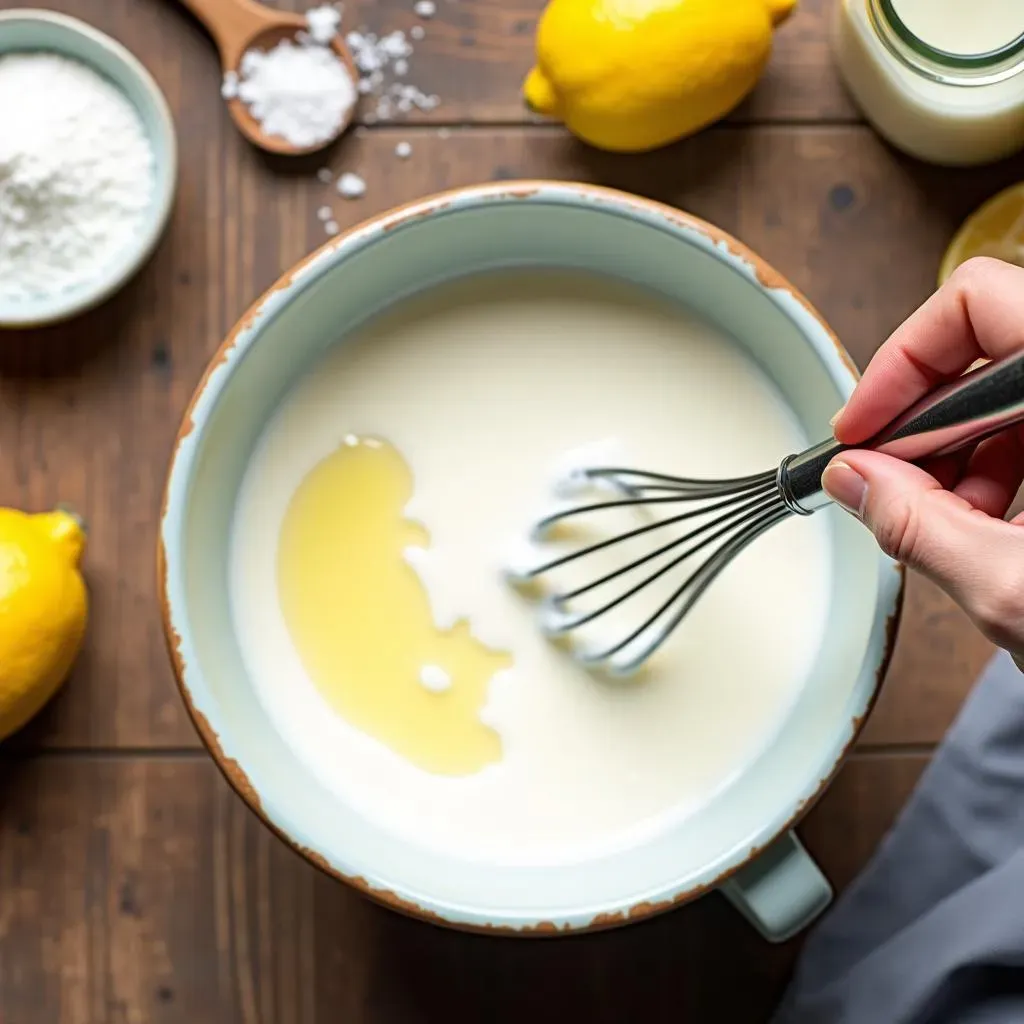Table of Contents
Ever found yourself in the middle of cooking, only to realize you’re out of sour cream? It’s a kitchen mishap we’ve all faced! The good news is, you don't need to abandon your recipe. The question of using a "milk substitute for sour cream" often pops up, and the answer isn't always straightforward. This article will explore the ins and outs of using milk as a stand-in, examining why it works sometimes, and why other times you should consider different options. We’ll break down the characteristics of both milk and sour cream, guiding you on when and how to make the swap successfully. We'll also explore other dairy and non-dairy contenders that can save the day. By the end, you'll be armed with the knowledge to confidently navigate any recipe, even when that crucial dollop of sour cream is missing. Let's get cooking!
Understanding Milk and Sour Cream: Key Differences

Understanding Milk and Sour Cream: Key Differences
The Basics of Milk
Okay, so let's start with milk. It's pretty straightforward, right? It's a liquid that comes from animals, usually cows, and it's mostly water. But it also has fats, proteins, and sugars, which give it that slightly sweet taste and creamy texture. Think of it as the blank canvas in our kitchen. It's versatile, we use it in cereal, coffee, and lots of baking recipes. Milk is pretty neutral in flavor, making it a great base for so many dishes.
We've got different kinds of milk too, like whole milk, 2%, 1%, and skim. The main difference? The fat content. Whole milk is the richest, with the most fat, while skim has almost none. That fat makes a big difference in how creamy and rich a dish will be. It's like the difference between a fluffy cloud and a light breeze. Both are air, but they feel very different.
Sour Cream's Tangy Transformation
Now, sour cream is a different beast altogether. It starts as cream, which is the fatty part of milk. But then, a cool thing happens: it gets fermented. That means special bacteria are added, which eat the sugars and produce lactic acid. This process is what gives sour cream its signature tangy flavor and thick, luxurious texture. It’s like the milk went on a little adventure and came back totally changed.
That tanginess and thickness are key. Sour cream is often used to add richness and a bit of zing to recipes. It’s that secret ingredient that makes things taste a little more special. It's not just a liquid like milk. It’s more like a thick, velvety cloud that adds depth and flavor. You can't just swap them out without thinking about how it will affect the dish.
Feature | Milk | Sour Cream |
|---|---|---|
Origin | Animal-based liquid | Fermented cream |
Texture | Thin, liquid | Thick, creamy |
Flavor | Neutral, slightly sweet | Tangy, acidic |
Fat Content | Varies (whole, 2%, skim) | High |
Can You Really Use Milk as a Sour Cream Substitute?

Can You Really Use Milk as a Sour Cream Substitute?
The Straight Answer
Alright, let’s get to the heart of it. Can you swap milk for sour cream? The short answer is: sometimes. It’s not a perfect one-to-one swap, like trading a dollar for a dollar. Milk lacks the thickness and tang that makes sour cream special. Imagine trying to build a sandcastle with water instead of damp sand. It just won't hold up the same way. But, in certain recipes, milk can be a decent stand-in, especially if you know what you’re doing.
The key here is understanding where the differences matter most. In some cooking scenarios, like soups and sauces, the change might be subtle. But in others, like baking a cake or making a creamy dip, the difference will be noticeable. It’s a bit like using a regular marker instead of a highlighter. Both can write, but one does the job better. We have to think about what we are trying to achieve.
When Milk Can Step In
So, when does milk work as a substitute? It’s all about the context. Think about recipes where the sour cream is primarily adding liquid and a bit of richness, not necessarily the tang. For instance, in some pancake or waffle recipes, milk can do the job without causing too much chaos. It'll still add moisture, but it won't give you that same lift of flavor as sour cream. It’s like using a regular brush to paint a wall instead of a fancy one. It will do the job, but the texture might be different.
Also, milk can work in some soups and sauces, especially if you're not relying on sour cream for a super thick consistency. In these cases, the milk will blend in without too much fuss. It won't give you the same velvety texture as sour cream, but it will still add some liquid and a little bit of richness. It's like using a regular car instead of a sports car. Both will get you there, but one is a little bit more comfortable and stylish.
Recipe Type | Milk as Substitute | Why It Works (or Doesn't) |
|---|---|---|
Pancakes/Waffles | Okay | Adds moisture, but lacks tang. |
Soups/Sauces | Can work | Adds liquid, but may need thickening. |
Cakes/Muffins | Not ideal | Will alter texture and flavor. |
Dips/Dressings | Not recommended | Lacks the needed thickness and tang. |
The Downside of Swapping
But hold on, it’s not all sunshine and rainbows. The problem with using milk instead of sour cream is that it often leads to a thinner, less flavorful result. In baking, for example, the fat in sour cream is what helps create that moist, tender crumb. Using milk might result in a drier, denser cake. It’s like trying to make a sculpture with clay that is too wet. It just won't hold its shape.
And when it comes to dips and dressings, milk just doesn’t cut it. You'll miss that creamy, tangy bite that sour cream provides. It’s the difference between using a real guitar and a toy guitar. Both will make noise, but one is much more enjoyable. So, while milk can be a handy substitute in a pinch, it’s important to be aware of the trade-offs. It's all about knowing what you are giving up in the trade.
Other Dairy and NonDairy Alternatives to Sour Cream

Other Dairy and NonDairy Alternatives to Sour Cream
Dairy Delights: Beyond Milk
Okay, so milk isn’t always the hero we need. But don't worry, the dairy aisle has other contenders. First up, plain yogurt. It’s got a similar tang to sour cream, thanks to those friendly bacteria, and it’s usually thicker than milk. Think of it as sour cream's slightly less intense cousin. It might not be as rich, but it does a solid job in many recipes. I've used it in dips and sauces and it's worked out great. Just make sure it's plain, not flavored, or your dish will have a weird taste twist.
Then there’s cottage cheese. Yes, you heard me right. It’s not just for breakfast anymore. When blended, it becomes surprisingly smooth and creamy. It’s like a secret weapon in the kitchen that nobody expects. It's a bit milder than sour cream, but it adds a lovely richness that milk just can’t provide. I’ve even seen people use it in baking, though you might need to adjust the liquid content of the recipe. It’s like using a swiss army knife, it can do many things, but it’s not perfect for everything.
Non-Dairy Wonders: Plant-Based Options
But what if you’re not a dairy fan? No problem! The plant-based world has some awesome alternatives. Cashew cream is a game-changer. Soak some cashews, blend them with water, and boom – you’ve got a rich, creamy substitute that rivals sour cream. It's like magic, but it's just cashews. It's perfect for dips, sauces, and even baking. It's like finding a hidden treasure in your pantry.
And let’s not forget coconut cream. The thick part from a can of full-fat coconut milk is another great option. It adds a richness similar to sour cream, though it does have a slight coconut flavor. It’s like using a special spice, it changes the flavor, but in a good way. It’s fantastic in vegan recipes and adds a unique twist. I've used it in curries, and it’s unbelievably delicious. Just be aware that it will bring its own flavor to the table. It’s not a neutral option, but it’s a pretty awesome one.
Substitute | Type | Texture | Flavor | Best Use |
|---|---|---|---|---|
Plain Yogurt | Dairy | Thick, creamy | Tangy | Dips, sauces |
Cottage Cheese | Dairy | Smooth when blended | Mild | Baking, dips, sauces |
Cashew Cream | Non-Dairy | Rich, creamy | Mild, nutty | Dips, sauces, baking |
Coconut Cream | Non-Dairy | Thick, rich | Coconutty | Curries, vegan recipes |
Tips for Baking and Cooking with Your Milk Substitute for Sour Cream

Tips for Baking and Cooking with Your Milk Substitute for Sour Cream
Okay, so you've decided to use a milk substitute for sour cream, and you're probably wondering how to make it work best. It’s not as simple as a straight swap, but with a few tricks, you can get pretty close. First, if you're using milk, consider adding a bit of acid, like lemon juice or vinegar. This will mimic the tang of sour cream and give your dish a bit of a lift. A teaspoon or two should do the trick. Think of it like adding a pinch of salt to bring out the flavors. It’s a small adjustment, but it makes a big difference.
Also, you might need to thicken your milk substitute. Since milk is much thinner than sour cream, your recipe might end up too runny. You can use a bit of cornstarch or flour to help with that. Mix a tablespoon of cornstarch with a little bit of cold water to make a slurry, then whisk it into your milk substitute. Heat it gently until it thickens. It's like adding a bit of glue to your mixture to help it hold together. Just don’t add too much, or it'll get gloppy. It’s all about finding the right balance.
Tip | Why It Matters |
|---|---|
Add Acid (Lemon Juice, Vinegar) | Mimics sour cream's tang |
Thicken with Cornstarch or Flour | Achieves a thicker consistency |
Adjust Other Liquids | Prevents a runny dish |
Taste and Adjust | Ensures the flavor is just right |
Another thing to keep in mind is the overall liquid content of your recipe. If you're substituting milk for sour cream, you might need to reduce the amount of other liquids to prevent the dish from becoming too watery. It’s like making a soup, you have to balance the ingredients to get the right consistency. Start by reducing the liquid by a tablespoon or two, then add more if needed. It's always easier to add more liquid than to take it out. And finally, always taste as you go. The best way to make sure the substitution works is to adjust the flavors as needed. Don't be afraid to add a little more lemon juice or a pinch of salt to get it just right. It’s all about experimenting and finding what works best for your taste buds. Cooking is an art, not a science, so have fun with it!